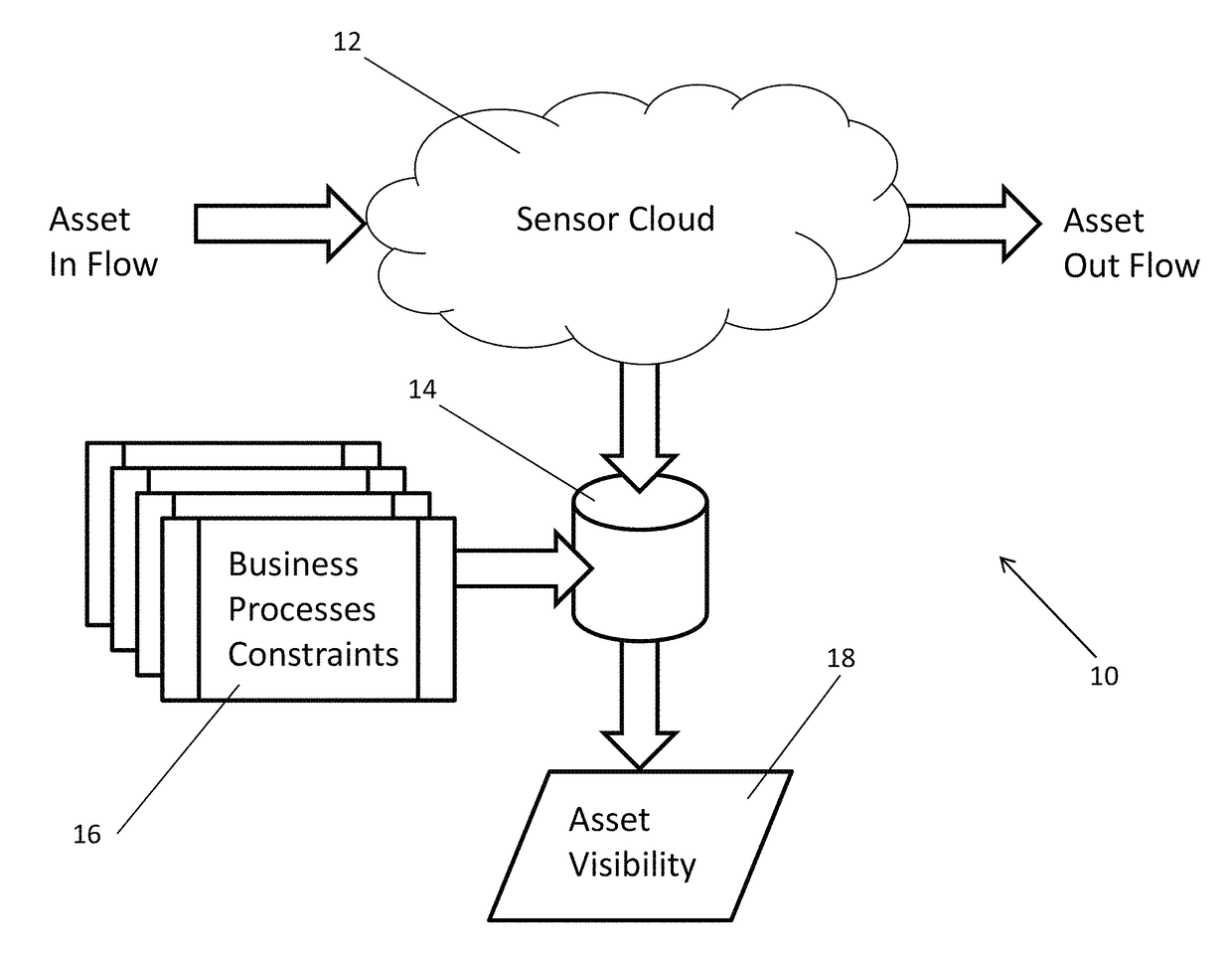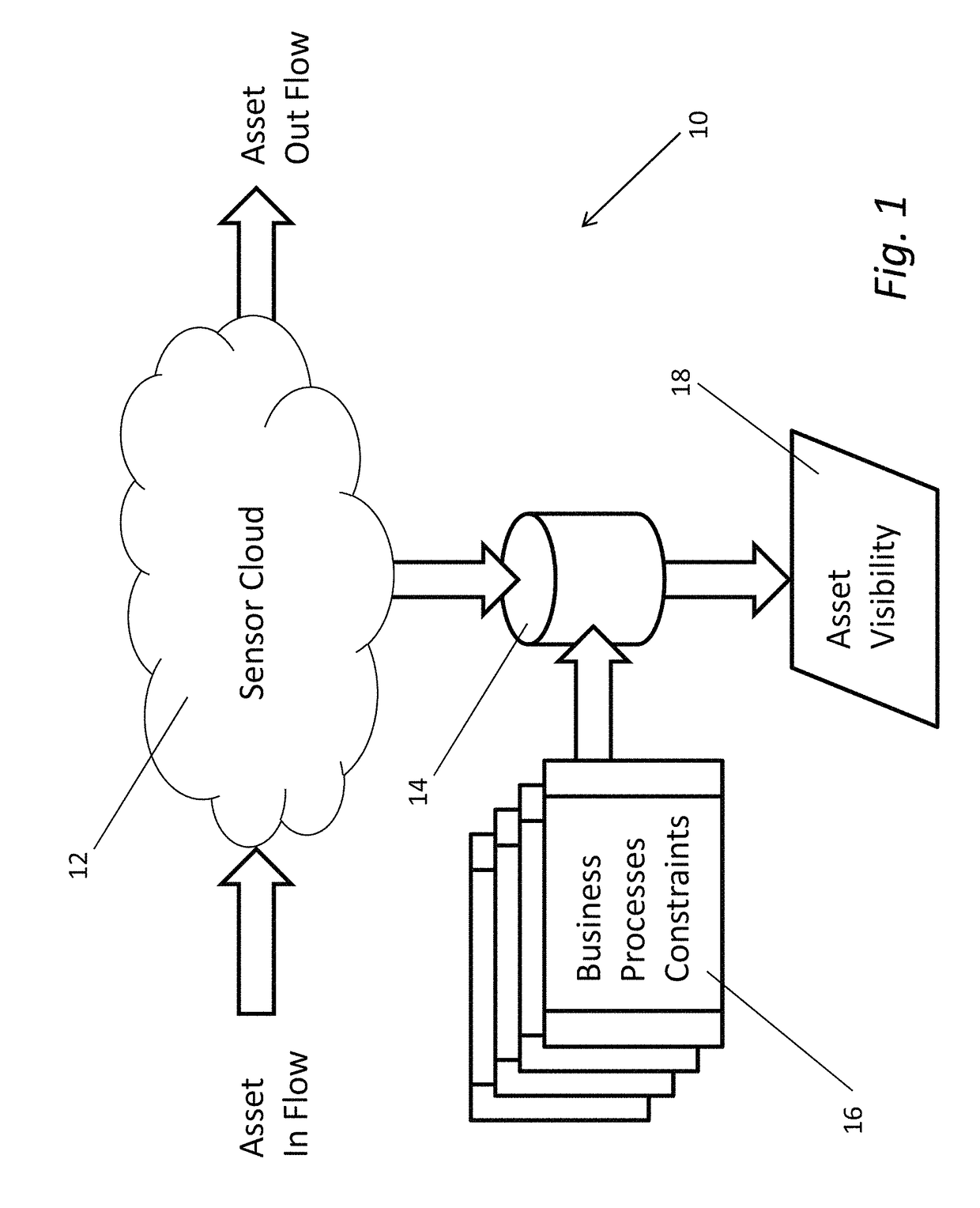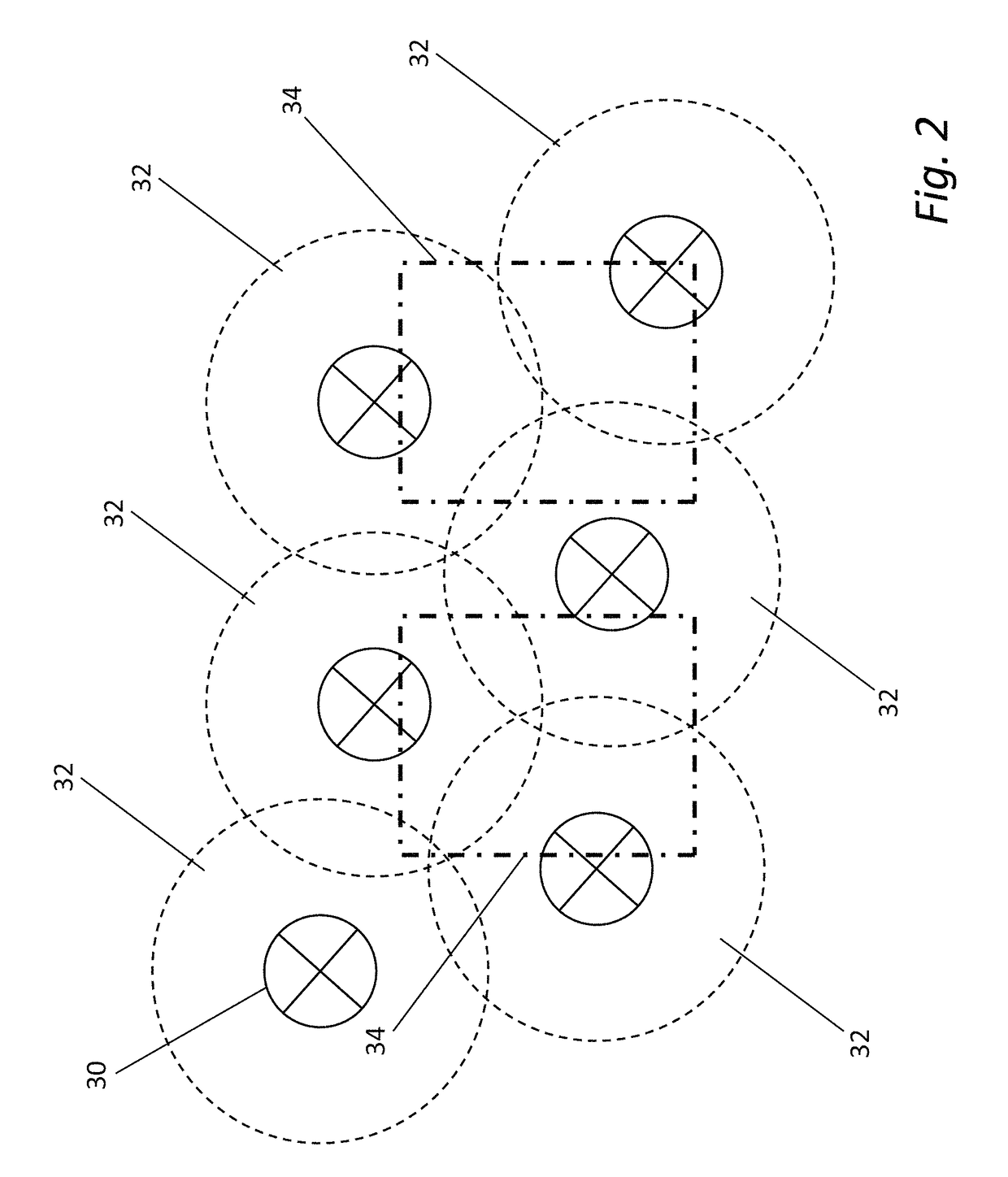Systems and methods for detecting patterns in spatio-temporal data collected using an RFID system
a spatio-temporal data and pattern detection technology, applied in the field of interpreting data generated by rfid systems, can solve problems such as limited information concerning the motion of assets, and achieve the effect of enhancing real-world business processes occurring within the sensor cloud
- Summary
- Abstract
- Description
- Claims
- Application Information
AI Technical Summary
Benefits of technology
Problems solved by technology
Method used
Image
Examples
Embodiment Construction
[0030]Turning now to the drawings, RFID systems in accordance with embodiments of the invention are described that are configured to build spatio-temporal databases of sensor information and to detect and respond to patterns of data within the spatio-temporal database. In many embodiments, the RFID system is capable of locating the spatial position of sensors within a sensor cloud. The term sensor cloud refers to all of the sensors that are visible within the coverage area of an RFID system. As information is collected from the sensors, the RFID system can build a spatio-temporal database that describes the spatio-temporal trajectories of the sensors. Filters can be applied to the data within the spatio-temporal database based upon a priori knowledge of real world actions or business processes that are likely to be applied to assets within the sensor cloud.
[0031]The ability of an RFID system in accordance with an embodiment of the invention to locate the spatial position of sensors ...
PUM
 Login to View More
Login to View More Abstract
Description
Claims
Application Information
 Login to View More
Login to View More - R&D
- Intellectual Property
- Life Sciences
- Materials
- Tech Scout
- Unparalleled Data Quality
- Higher Quality Content
- 60% Fewer Hallucinations
Browse by: Latest US Patents, China's latest patents, Technical Efficacy Thesaurus, Application Domain, Technology Topic, Popular Technical Reports.
© 2025 PatSnap. All rights reserved.Legal|Privacy policy|Modern Slavery Act Transparency Statement|Sitemap|About US| Contact US: help@patsnap.com



